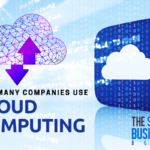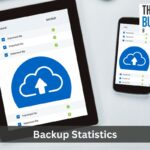Cloud computing represents a new frontier of the internet and how applications are developed, used, and managed.
While they’re an incredible innovation that has revolutionized computing, they come with a significant cost: the massive amounts of power that cloud computing infrastructure uses and consumes.
With environmental sustainability becoming an increasing concern for companies, organizations of all sizes are looking for ways to streamline their operations and reduce their carbon footprint.
Thankfully, there are solutions out there that allow you to utilize these resources while reducing your environmental impact.
Developing a sustainable cloud strategy can help you leverage your cloud resources effectively and efficiently while going green at the same time.
Keep reading to learn more about sustainable cloud computing strategies and what to do to make your organization leaner and greener.
We’ll look into key sustainability strategies, like how you can optimize cloud management through tagging or what to look out for in a green cloud hosting provider.
Post Contents
Why Sustainability Matters
Our modern, highly interconnected world generates massive quantities of all kinds of data, and companies need solutions to help store, process, and manage them.

While companies traditionally used to handle much of this using local solutions like in-house servers, the sheer scale and scope of data being created today far exceed what most companies can handle—this is where cloud computing comes into play.
Cloud computing offloads data storage and processing to a third-party provider, where information is uploaded and accessed in a virtual space on the internet, also known as the “cloud”.
Why leveraging cloud resources can yield many benefits for organizations; the infrastructure powering these resources uses tremendous amounts of energy each day.
These massive energy demands are only expended to continue growing, with consumption rising from 200 TWh in 2016 to a staggering 2,967 TWh in 2030—a 1400% increase!
With these growing energy demands comes the need for sustainable solutions to power them.
A survey by Gartner predicts that up to 70% of companies with sustainability initiatives will better utilize cloud computing to help them meet their environmental sustainability goals by 2026.
Yet, despite the significant number of companies using these resources, few actually consider sustainability and minimizing environmental impact as a top concern when choosing a cloud hosting provider.
Choosing A Sustainable Cloud Hosting Provider
Before choosing a sustainable cloud hosting provider, decision-makers must carefully assess their organization’s own environmental and sustainability goals, objectives, and timelines.
Doing so can help you better identify providers that are aligned with these goals and partners that will be best equipped to help you achieve them.
One of the single most important questions you need to ask prospective cloud hosting providers is how much they would be able to cut down on emissions from providing cloud services during your contract.
After all, transparency is a key way to tell how committed a company is to sustainability. Any hesitancy or reluctance to provide this information should be taken as an immediate red flag.
Another key consideration when choosing a cloud hosting provider is to be skeptical of them purporting a novelty data center featuring innovative green solutions to power and cool them as though they’re the standard for the company.
While these data centers are important on their own, be sure to ask for more detailed specifics about their operations.
Specifically, ask about the data centers in the area you’re going to be connecting to and how the company operates them.
Also, look into any certifications a prospective cloud hosting provider may hold, along with their environmental certification goals and roadmap.
Some key certifications a data center may hold include the Leadership in Energy and Environmental Design (LEED) certification and the ISO 50001 certification.
These third-party energy efficiency and sustainability certifications clearly demonstrate a provider’s level of commitment and dedication to their goals for going green.
Choosing Data Center Locations
While an often overlooked thing to consider, the data center’s geographical location can be vital in helping you determine whether or not a cloud hosting provider is sustainable.

This is another key component of developing a sustainable cloud strategy despite being less conventional.
Simply put, data centers in cooler climates have fewer cooling needs than those in warmer climates. Thus, they inherently use less energy.
On top of this, where a data center is located can help determine its access to renewable power solutions.
This can be as simple as connecting to a municipal power grid with access to renewable power sources and establishing power usage agreements to draw from those resources with their provider.
Or, it can also be as complicated as implementing a series of in-house solutions to offset power consumption, like windmills and solar panels.
Optimize Resources Through Cloud Tagging
Cloud tagging is the process of assigning tags to cloud resources, which is a label featuring a value and a key.
By assigning tags to your cloud resources, you can quickly and readily identify different resources, allowing you to allocate them most efficiently.
Improving your resource management is a simple yet effective way for you to reduce your resource usage and overall power consumption.
On top of this, effective cloud tagging can also help you streamline your operations.
It can help you identify what areas may require more attention, what tasks you can automate, and what may not be working or wasting resources.
This overall streamlining is another great component of a sustainable cloud strategy.
Finding Sustainability In The Cloud
Developing a sustainable cloud strategy is a great way for your organization to reduce its overall environmental impact and carbon footprint.
On top of this, it’s also a great way to help streamline your overall operations while saving money on operating costs.
When developing a strategy, make sure to opt for a sustainable cloud hosting provider, choose a strategically located data center, and optimize your resources through cloud tagging.
Doing so will set you up for success as your company grows, all while doing your part to save the planet at the same time.






























